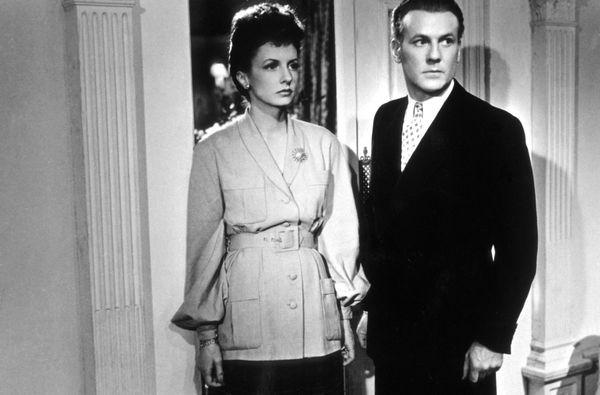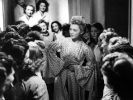Eye For Film >> Movies >> Falbalas (1945) Film Review

If Paul Thomas Anderson's Phantom Thread couturier Reynolds Woodcock has a spiritual antecedent it is surely Jacques Becker's driven and detailed - and, as we see from the earlier film's opening minutes, doomed - fashion designer Philippe Clarence. Imbued with careful movement and a precise manner by Raymond Rouleau, it's instantly obvious that Philippe has never had a hair out of place that he didn't want to be, let alone a feeling. Working on his latest collection, he's also a lothario-like 'collector' in his personal life and has just worked his way to the end of a relationship with his latest muse, although the model in question, Anne-Marie (Françoise Lugagne), still holds a candle for him.
A visit to his cloth supplier Daniel Rousseau (Jean Chevrier) brings him into the orbit of his friend's fiancee Micheline Laufaurie (Micheline Presle) but his usual love-em-be-inspired-and-leave-em tactics are set for an upset, with Becker skilfully blending the realism of the fashion world with romantic melodrama, while retaining a almost macabre fairy-tale edge.

That the film is so concerned with fabric and cut is perfect for a filmmaker like Becker, who always took great care in the creation of his worlds, even going so far as to cast a real-life escapee in his prison break final film Le Trou. Becker's mother was a model, who had founded her own fashion house, so he also had a grounding in the world he outlines here, expertly showing the ebb and flow of the establishment, from the airy scrutiny of Philippe's fitting sessions, where he is helped by the no-nonsense Solange (Gabrielle Dorziat, who works wonders with even a glance), to the fierce bustle of a seamstress workshop filled with excitable young women. The detailing, including the flamboyant naming of dresses and the rush to be finished, feels as right as a perfect necklace, so that it sets off the wider fabric of the story without detracting from it.
Beyond the film's interesting backdrop, there's audacity to the direction that also lifts what could be a much more pedestrian plot in less artistic hands. An elevator, for example, carries the mood as well as people in a key scene, as we hear Phillipe and Daniel start a conversation and then continue it as only Phillipe descends before, upon exiting, he jumps straight back in again in order to ride up once more with the striking Micheline. A tense moment between Phillipe and Micheline will later be heightened and punctuated by the constant back and forth of a family game of ping-pong. And, later still, a children's merry-go-round may seem like a casual detail, but Becker uses the kids' attempts to get a stick through a hoop as a way of giving the moment both movement and focus.
The romance itself perhaps lacks a ha'peth of cloth to make it fully lived in but the characters of Phillipe and Micheline are intriguingly complex, taking unexpected decisions and even Daniel is given room for emotional manoeuvre by a script - co-written by Maurice Aubergé and Maurice Griffe - that feels generous in terms of development towards all of its characters, big and small. If you're looking for a stylish - and style-focused - starter before sinking your teeth into Becker's later masterworks like Touchez Pas Au Grisbi and Casque d'Or, this is it.
Reviewed on: 02 Nov 2021















